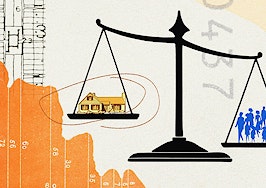- Adjusted for inflation, home prices across the nation are 38.5 percent lower than their peak a decade ago.
- Without inflation factored in, the national price level is 2.6 percent away from the housing boom peak in 2007.
- With the RHPI standardized at 100 to represent home prices in 2000, San Francisco holds a Real Price Index of 99.9.
- San Francisco was no. 4 among markets with the highest year-over-year decrease in RHPI.
First American has released the newest edition of its Real House Price Index, which reflects inflation factors such as shifts in income and mortgage rates.
According to the report, the influence of better wages and declining interest rates shows that even though prices are close to peak in many major metros, consumers are gaining buying power.
Despite reports of affordability waning in major metros across the nation, First American found real house prices are 38.5 percent below their peak seen in 2006 and 17.3 percent lower than 2000.
Without factoring income and interest rate changes, First American reports home prices are just 2.6 percent away from the 2007 housing peak.
First American says foreign financials are helping affordability in the U.S. as more investors are turning toward U.S. Treasury Bonds. As a side effect, treasury yields are keeping mortgage rates low for prospective homebuyers.
San Francisco home prices, then and now
With the RHPI standardized at 100 to represent home prices in 2000, San Francisco holds a Real Price Index of 99.9.
The current index reflects a 3 percent year-over-year drop, showing that San Francisco home prices are less of a financial burden than they were in 2015 and slightly less than in 2000. Between May and June of this year, San Francisco home prices dropped 0.2 percent, the report says.
San Francisco was no. 4 among markets with the highest year-over-year decrease in RHPI. First American says a boost in estimated median household income helped combat price gains to uphold buying power in the City by the Bay.

Real House Price Index / First American
Although two very different markets in terms of price point, San Francisco and Detroit show similar trends in terms of the housing recovery. When adjusted for income growth and mortgage rates, Detroit and San Francisco home prices are both below their pre-recession peaks.
Out of 43 metropolitan areas, 27 saw year-over-year drops in real house prices, illustrating that the majority of cities are becoming more affordable for homebuyers.













